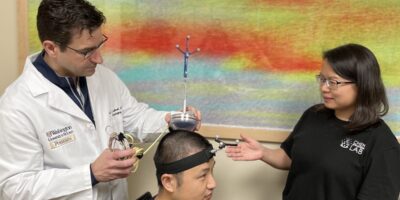Translational Science Benefits
Community & public health benefits (Health care characteristics)
Definition
Increased equity and ability for all to gain entry to and to receive services from the health care system, regardless of race, ethnicity, age, income, ability, sex, gender, sexual orientation, geographic location, or health status. Access to health care consists of three core elements: access to the health care system (through insurance coverage), services located nearby, and access to a provider with whom the patient trusts and can communicate.
Rationale
Health care accessibility increases the impact of translational science by helping innovations reach as many people as possible, especially vulnerable, at-risk populations. Strategies that enhance health care accessibility demonstrate coordinated translational science efforts among scientists, health care providers, insurers, government regulators and the community to optimize community health outcomes.
Guidance
Advice from authors on searching for information:
Access to self-reported researcher or administrative/in-house data may be required to locate documentation. Longitudinal data on health care access may be difficult to find for local areas but is available for the U.S. on HealthyPeople.gov and Access to Health Care – CDC. Definitions of accessibility may vary among stakeholders and can include having insurance and nearby medical facilities, access to culturally acceptable care, care that is available during patient schedules, and patient access to transportation.
Resources & Data
Organizations, repositories, websites, and other sources where you can find more information:
Local
- Missouri Health Care For All. Website of all of the organizations across that state that are dedicated to providing quality health care to all Missourians. Provides stories of families that were helped, ways to contribute, and other resources for areas that want to work on improving health care accessibility in MO.
- St. Louis Regional Health Commission. Report on the improved health care services provided to community members and guidelines for increasing quality and equity of services within other areas of St. Louis City and County. Discusses stakeholder involvement, state and federal insurance plan coverage that can affect quality/equity, and future steps for sustaining and further improving health care accessibility.
General
- Healthy People 2020 – Access to Health Services. From the Office of Disease Prevention and Health Promotion provides information on why health service equity and accessibility is important for population health and links to specific health topics. Gives overall statistics of accessibility by race, income, and sexual orientation, and other resources for communities looking to incorporate interventions to improve their health care accessibility.
Data Limitations
Challenges you may encounter while searching for information:
Interventions listed by national websites might not be applicable to certain communities based on political climate and options/examples for those circumstances may not be available or harder to find.
Publications
Articles, books, and other publications in translational science using the indicator:
- Goddard M, Smith P. Equity of access to health care services: theory and evidence from the UK. Soc Sci Med. 2001 Nov;53(9):1149-62. doi: 10.1016/S0277-9536(00)00415-9.
- MacKinney AC, et al. Access to rural health care: A literature review and new synthesis. Rural Policy Research Institute Health Panel. US: US Department of Health and Human Services, 2014.
- Penchansky R, Thomas JW. The concept of access: definition and relationship to consumer satisfaction. Med Care. 1981 Feb;19(2):127-40.
- Sibley LM, Weiner JP. An evaluation of access to health care services along the rural-urban continuum in Canada. BMC Health Serv Res. 2011 Jan 31;11:20. doi: 10.1186/1472-6963-11-20.
Case Studies

Detecting Brain Cancer Without a Knife
Facilitating brain cancer diagnosis with an innovative and portable ultrasound device
Clinical & medical benefits
Community & public health benefits
Economic benefits

Improving Treatment Adoption and Reach for Unhealthy Alcohol Use in Veterans
Implementing facilitation strategies to improve the quality of alcohol-related care for Veterans
Community & public health benefits
Economic benefits

Addressing Food Insecurity with a Produce Prescription Program
Decreasing diet-related illness and food insecurity for communities of color in Rhode Island
Community & public health benefits
Economic benefits
Policy & legislative benefits

